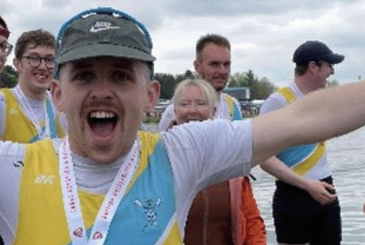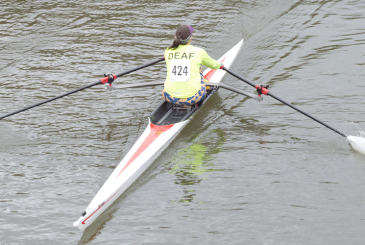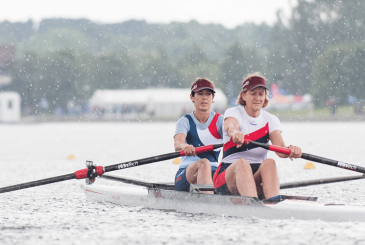Following on from Nick’s first article, his second article looks at the importance of sleep for athletes, before introducing seven KSRI’s (Key Sleep Recovery Indicators) that can help you redefine your approach to sleep
Advances in technology, sport science and real-time analysis have accelerated our knowledge of what it takes to win and continues to elevate performance targets and expectations. Without knowledge and structure underpinning any sleep-wake routine (SWR), our ability to adapt and maximise recovery is fast becoming a more serious problem than past generations ever faced.
In my journey as a sport sleep coach over the last two decades the conversation about the causes of increased fatigue and tiredness between athletes and coaches both ranked sleep as the most prominent problem.
Athletes have to cope with more than just the ever-expanding demands of modern sport. They face significant shifts in personal, social, and behavioural changes, increasing levels of stress and anxiety, and counterproductive recovery habits.
Short wave sleep, or deep sleep as it’s more commonly known, is vital for optimum recovery in athletes
Not surprisingly, we have seen a rapid increase in athletes who observe higher levels of Electronic Insomnia, classified as gamers, social networkers, and virtual communicators, creating a mindset of “can’t switch it off.’ Beyond the ongoing feeling of fatigue from a lack of quality sleep, research clearly indicates that human recovery, sleep and sleeping contributes far more significantly to our ability to function effectively.
For example Slow Wave Sleep (SWS), or deep sleep as it’s more commonly known, is vital for optimum recovery in athletes. During SWS, a growth hormone is released and studies have shown that longer SWS periods are proportional to wakefulness during the day. When SWS is decreased, daytime sleepiness increases and a reduction in athletic performance occurs.
In one study, 632 athletes were surveyed and of these athletes, 66% (416) reported that they slept worse than normal at least once before a competition. 70% reported problems falling asleep, 43% reported waking up early in the morning, and 32% reported waking during the night. All these will lead to decreased SWS.
The first step with any athlete at any level is to become more Recovery Sleep Aware
Of particular note from my experience over the last decade is the rise in the use of herbal or medical stimulants to push through. There seem to be much higher usage levels of caffeine, energy drinks, supplements, virtual over-the-counter so called “natural boosters”. Many athletes may do well to adopt a more perceived positive approach, applying the latest relaxation and meditation techniques, using sensory as well as behavioural and cognitive interventions, even considering a new mattress or pillow, changing their diet or grabbing a tracker or Sleep App.
In an attempt to overcome sleep recovery fatigue, using random and/or in isolation interventions can develop other counterproductive side effects, and even promote more consistent periods of insomnia, which in turn can lead to the more significant use of prescribed and unprescribed drugs like sleeping tablets.
However, it’s far from all doom and gloom when it comes to sleep in sport, it just needs to be redefined. The first step with any athlete at any level, is to become more Recovery Sleep Aware with the basic principles combined with their personal sleep characteristics, creating a rolling 24-hour human recovery approach even in the most challenging of times.
Seven KSRI’s – Key Sleep Recovery Indicators
These seven KSRI’s are the building blocks of the R90 Technique, combining practical and achievable behaviour and awareness step changes [Marginal Gains] to redefine sleeping, developing more sustainable levels of mental and physical recovery.
Seven KSRI’s
| Circadian rhythm |
| Chronotype |
| Cycles vs hours |
| Pre & post |
| Recovery active |
| Environment |
| Sleeping products |
KSRI 1. Circadian Rhythm is a 24-hour internal cycle managed by our body clock deep within the brain. It regulates our internal systems such as sleeping, eating patterns, hormone production, mood and motivation.
KSRI 2. Chronotype is our genetic sleeping characteristic – A lark morning or night owl evening person. It determines our ideal sleep wake timings and when ideally to perform high and low intensity mental and physical activities.
KSRI 3. Cycles vs Hours Rethink sleep as 90 minute cycles not ‘so many’ hours, the length of time it takes a human under clinical conditions to go through the five key recovery stages and phases. Start with your most consistent wake time to break your 24 hours up into 16 stages. Five cycles of sleep = 7.5 hours = 35 hours in seven days
KSRI 4. Pre & Post With a consistent wake time in place, the post sleep 90 minute period is key to performance throughout the day and into the next sleep period. Create time to expose yourself to light inside or outside, season dependent, to trigger all of your natural hormones, bodily functions and kick start the day.
KSRI 5. Recovery Active is key to short and longer term success. It REVEALS higher levels of productivity, wasting valuable time sleeping without benefits and PROTECTS you from adopting negative behavioural steps to overcome fatigue.
KSRI 6. Environment Humans are designed to sleep anywhere, anytime, on and with anything. The environment you choose to sleep in ideally reflects our natural relationship with outside, inside and sensory familiarisation.
KSRI 7. Sleeping Products When it comes to choosing products to sleep on and with its simple. You just need to layer up to promote an ideal sleeping position of foetal on the opposite side to your dominant side, very shallow pillow, easy care allergenic bedding and be mindful of any unrealistic marketing claims.
Our ability to recover both mentally and physically is under new, ever increasing pressures including behavioural changes driven by technology, and the 24/seven world we are immersed in.
There’s never been a better time to raise our awareness and redefine our approach on why, when and how we sleep
Read Nick’s next article on sleep >>
–
–
–
–
–
–










